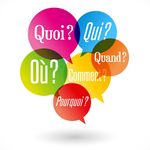Eclectic Approach
De Didaquest
Aller à la navigationAller à la rechercheThe printable version is no longer supported and may have rendering errors. Please update your browser bookmarks and please use the default browser print function instead.
 Traduction
Traduction
 Définition
Définition
Domaine, Discipline, Thématique
Définition écrite
- The eclectic approach is the label given to a teacher's use of techniques and activities from a range of language teaching approaches and methodologies. The teacher decides what methodology or approach to use depending on the aims of the lesson and the learners in the group. Almost all modern course books have a mixture of approaches and methodologies.
- Eclectic approach is a method of language education that combines various approaches and methodologies to teach language depending on the aims of the lesson and the abilities of the learners. Different teaching methods are borrowed and adapted to suit the requirement of the learners. It breaks the monotony of the class.
|
Définition graphique
 Concepts ou notions associés
Concepts ou notions associés
 Exemples, applications, utilisations
Exemples, applications, utilisations
|
 Erreurs ou confusions éventuelles
Erreurs ou confusions éventuelles
- Confusion between communicative and eclective approaches
- Confusion between Approach and Method
- Erreur fréquente: Combining all the approaches in an unnecessary way
 Questions possibles
Questions possibles
 Liaisons enseignements et programmes
Liaisons enseignements et programmes
Education: Liens, sites et portails
- URL :
- https://en.wikipedia.org/wiki/Eclectic_approach
- www.teachingenglish.org.uk/article/eclectic-approach
Difficultés liées à son enseignement
- how to integrate eight or so syllabuses (functional, notional, situational, topic, phonological, lexical, structural, skills) into a sensible teaching program
Aides et astuces
- We should develop-and-use teaching strategies that are more effective in helping students improve their ideas-AND-skills. When we're thinking about the unfortunate tensions of "ideas VERSUS skills" we should place more emphasis on helping students improve their skills.
- the balance & timing of discovery and explanation, and ways to combine them — are more effective when we are helping students when they are learning IDEAS, and are learning SKILLS.




